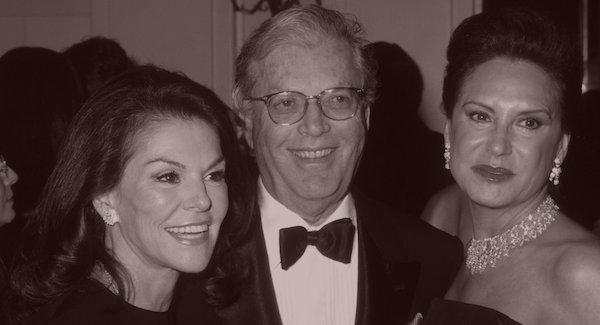|
Welcome back to Dry Powder.
I'm William D. Cohan, a best-selling author and former senior M&A banker. Thanks for your interest in Puck, our new media company covering the intersection of Wall Street, Washington, Silicon Valley, and Hollywood.
As always, if you're enjoying these previews of my private email, consider subscribing or sharing the subscription link with a friend. Today I'm sharing more war stories from my interviews with Jimmy Cayne, the trash-talking, card-hustling, shit-kicking C.E.O. of Bear Stearns, who reigned over the firm, one way or another, from 1986, the year it went public, until just before its ignominious fall.
The epic story of how a crafty bond salesman took over Bear Stearns—and risked an apocalypse to fight for it. When Bear Stearns ended up in the arms of JPMorgan Chase, on March 15, 2008, after a weekend of furious negotiations, the bank had come within a few hours of filing for bankruptcy. That was the stark choice facing the Bear board of directors: Either file for Chapter 11 or accept Jamie Dimon’s offer of $2 a share for the company. The board wisely chose Dimon’s offer, even though the stock had been as high as $172-a-share 14 months before.
The piddling offer for the whole company, worth barely more than the new Bear Stearns headquarters at 383 Madison Avenue, across the street from the JPMorgan Chase headquarters at 270 Park Avenue, was the safest solution for the Bear board. It required JPMorgan Chase to assume most of Bear’s liabilities—a not insignificant sum, it turned out—and allowed Bear’s creditors to get a bonanza, since its debt had been trading at around 30 cents on the dollar—reflecting the prospect of Bear’s bankruptcy—and now would get paid off at 100 cents on the dollar, based on JPMorgan Chase’s supposedly solid gold credit. For reasons that remain mysterious, but that have been blamed on the lawyers’ drafting errors, in the week after the March 15 agreement, JPMorgan Chase ended up increasing its offer for Bear Stearns to $10 a share and, just like that, Bear was gone.
As soon as JPMorgan Chase announced it was buying Bear, I started working on House of Cards, my book about the extraordinary collapse of Bear Stearns. I wanted to know what the hell happened and why.
Within days, with the invaluable help of Fares Noujaim, then a Bear Stearns vice-chairman, I found myself in the office of Jimmy Cayne, the penultimate C.E.O. of Bear Stearns, who had been reigning over the firm one way or another since 1986, the year it went public. Cayne had been the firm’s C.E.O. for nearly 15 years, until he abruptly resigned in January 2008, pretty much against his will...
FOUR STORIES WE'RE TALKING ABOUT Part II of my year-end list of the 22 boldest, totally bankable, 100 percent probable predictions from true industry insiders. MATTHEW BELLONI Notes on the president’s 2024 thinking, the Kamala curse, and the limitations of the Youngkin-McCormick MAGA playbook. PETER HAMBY Ben Smith and Justin Smith had been quietly discussing their new media ambitions, on and off, for years. Here's what they had to say. DYLAN BYERS The Gates-Kristof complex, tech power on the Prairie, and other notes on the long shadow of Silicon Valley. TEDDY SCHLEIFER
|
-
Join Puck
Directly Supporting Authors
A new economic model in which writers are also partners in the business.
Personalized Subscriptions
Customize your settings to receive the newsletters you want from the authors you follow.
Stay in the Know
Connect directly with Puck talent through email and exclusive events.











